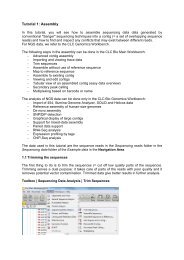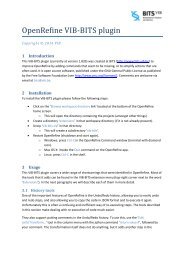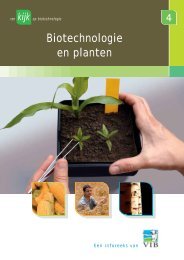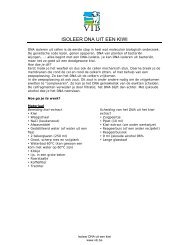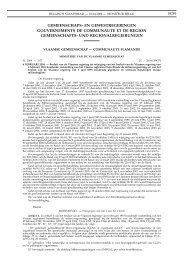You also want an ePaper? Increase the reach of your titles
YUMPU automatically turns print PDFs into web optimized ePapers that Google loves.
You also get a list of primers. Again deselect Gene from Annotation types settings.<br />
Save the resulting sequence as it will <strong>be</strong> the input to the next part of the Gateway <strong>cloning</strong> workflow.<br />
When you open the sequence again, you may need to switch on the relevant annotation types to<br />
show the sites and primer additions.<br />
4.2 Create entry clones (BP)<br />
The next step in the Gateway <strong>cloning</strong> workflow is to recombine the attB-flanked sequence of interest<br />
into an entry vector to create an entry clone, the so-called BP reaction. First, you have to download<br />
the entry vector (pDONR221) from <strong>In</strong>vitrogen’s web site (in the MultiSite Gateway® Three-<br />
Fragment Vector Construction Kit; http://igene.invitrogen.com/products/selector/vectors) and import<br />
it into the CLC Main Work<strong>be</strong>nch if it’s not yet present in the Cloning vector library folder in the<br />
Cloning folder in the Navigation Area.<br />
Expand the Cloning vector library folder and you see pDONR221 at the bottom of the list.



